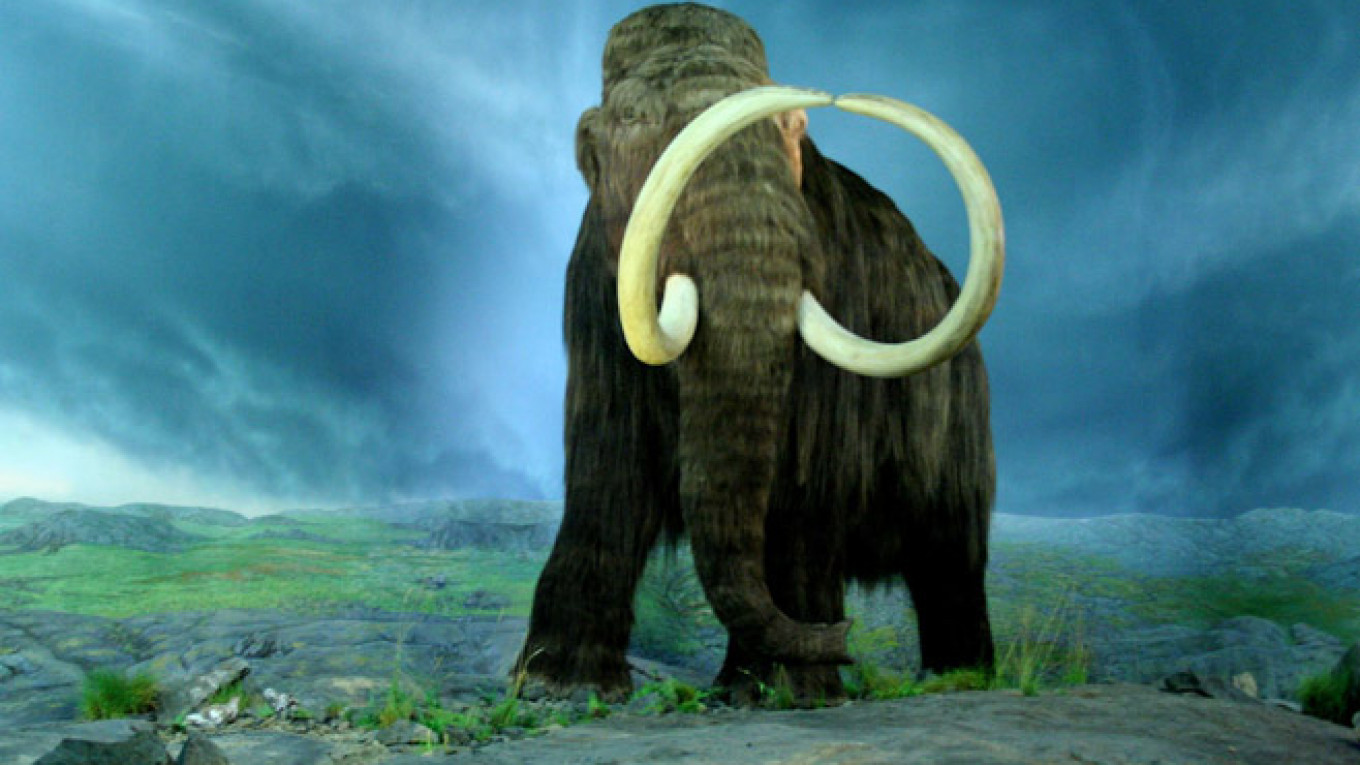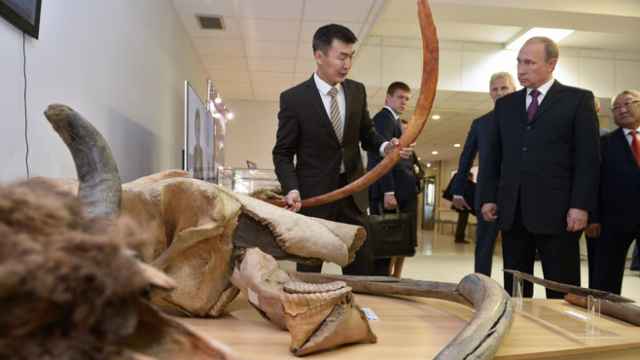Researchers in Siberia have found the remains of a baby mammoth that researchers believe was caught and eaten by humans about 25,000 years ago, local media reported Thursday.
The remains, discovered on the shores of Siberia's Belaya River, were separated into at least three distinct groups of chopped ribs, a broken skull and other bones, and teeth — all stacked over a 1.5-square-meter area, leading researchers at the Irkutsk State University to hypothesize that the animal fell prey to hunters, the Babr news agency reported.
Researchers estimate that the bones, discovered earlier this month, are about 25,000 years old. Since the remains belonged to a young animal, researchers also believe that the mammoth was probably captured by hunters when it fell behind its herd, the report said.
Archeologists digging up ancient human campsites in the village of Malta in the Irkutsk region also found the bones of a woolly rhinoceros this summer and a range of artifacts made from bone and stone, the report said.
A Message from The Moscow Times:
Dear readers,
We are facing unprecedented challenges. Russia's Prosecutor General's Office has designated The Moscow Times as an "undesirable" organization, criminalizing our work and putting our staff at risk of prosecution. This follows our earlier unjust labeling as a "foreign agent."
These actions are direct attempts to silence independent journalism in Russia. The authorities claim our work "discredits the decisions of the Russian leadership." We see things differently: we strive to provide accurate, unbiased reporting on Russia.
We, the journalists of The Moscow Times, refuse to be silenced. But to continue our work, we need your help.
Your support, no matter how small, makes a world of difference. If you can, please support us monthly starting from just $2. It's quick to set up, and every contribution makes a significant impact.
By supporting The Moscow Times, you're defending open, independent journalism in the face of repression. Thank you for standing with us.
Remind me later.






